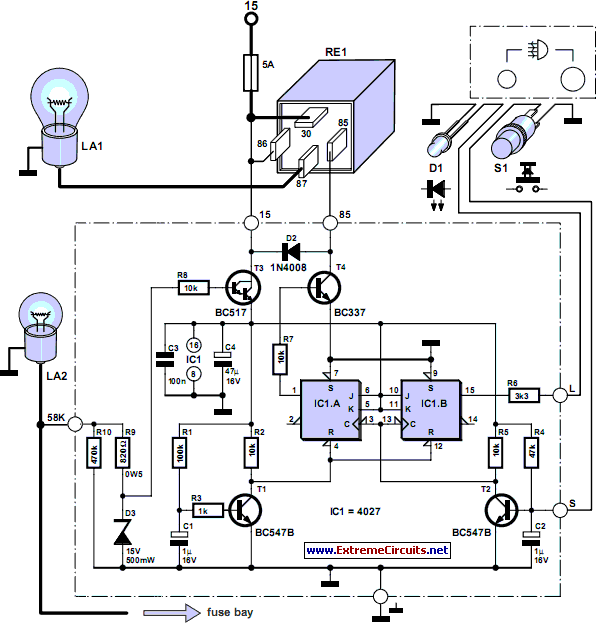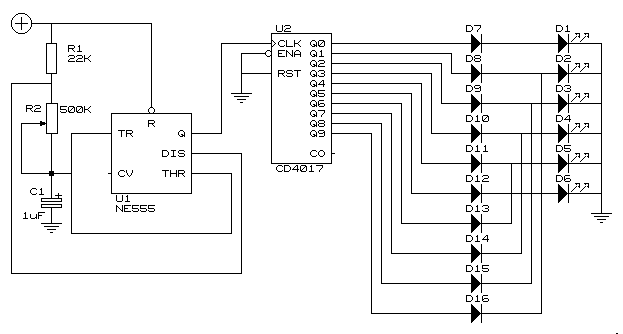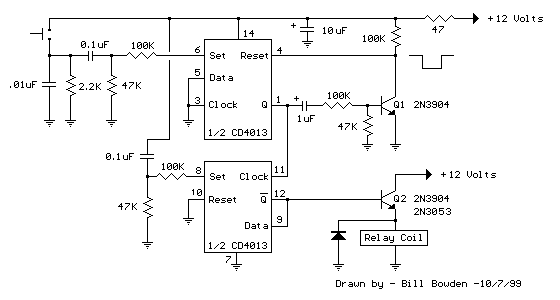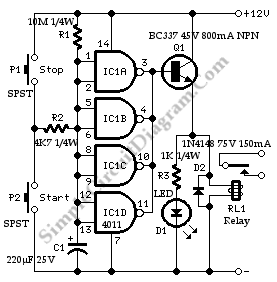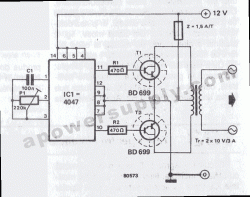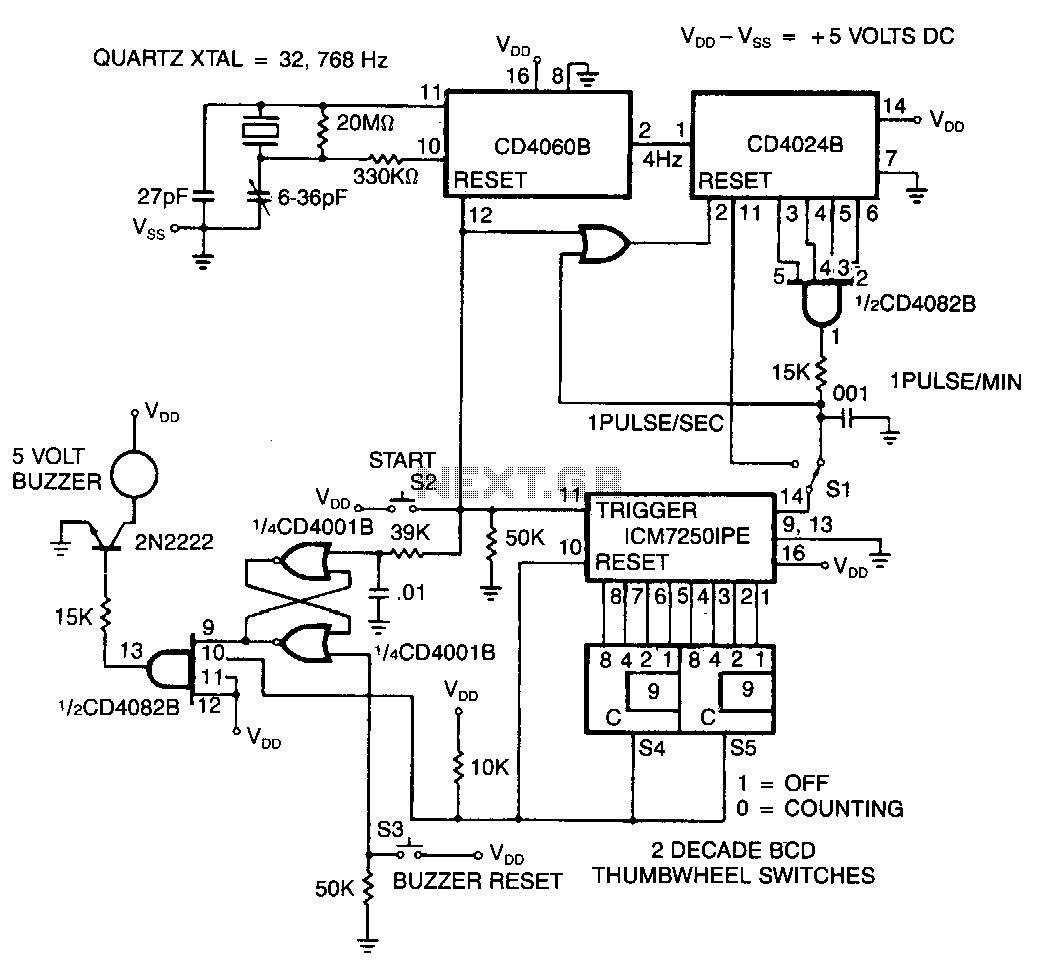
Rc Cars Cmos
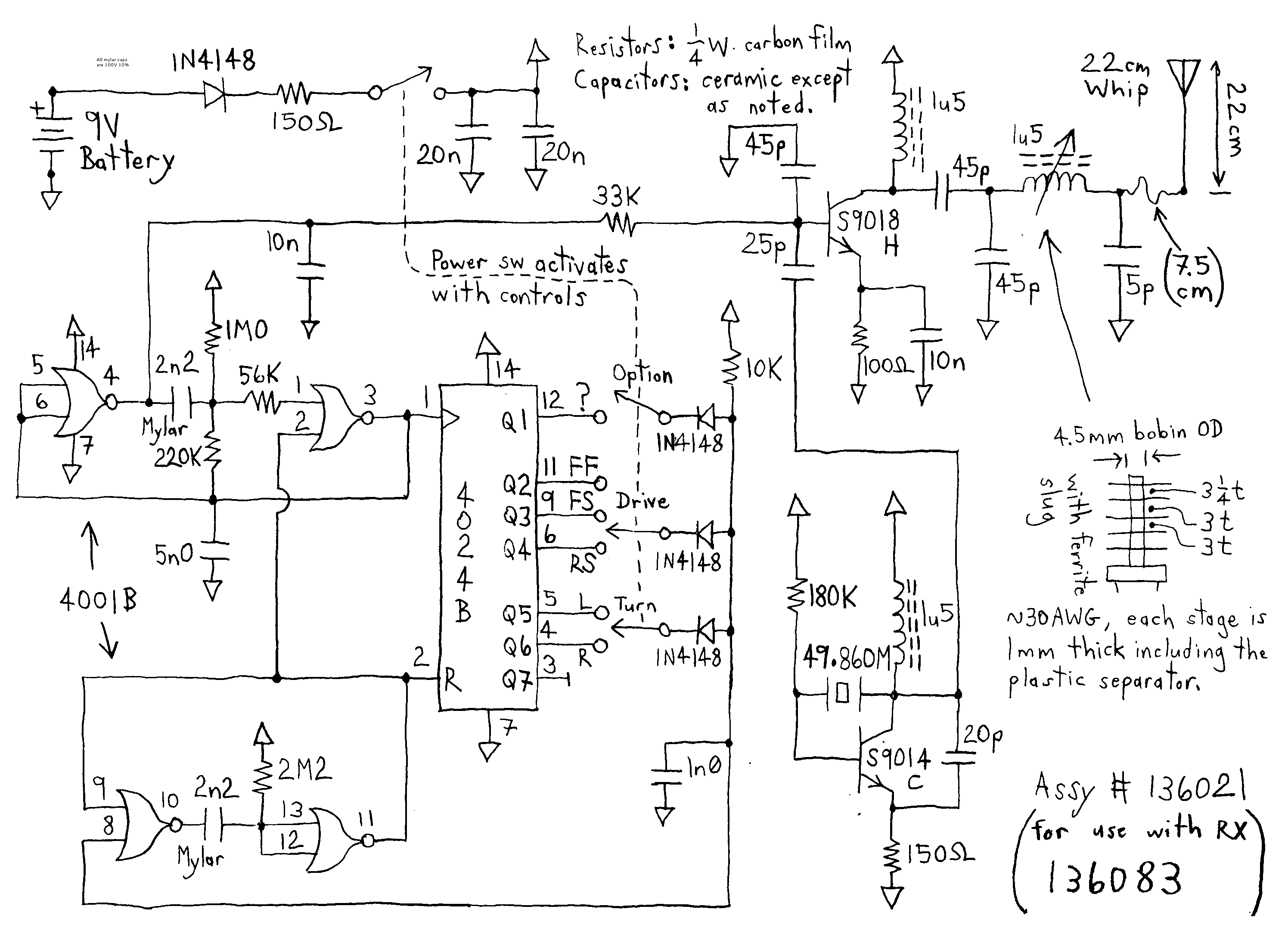
The receiver is equipped with a larger motor to drive the wheels and a smaller motor for steering, which operates in a non-proportional manner. An additional channel can be incorporated into the receiver by utilizing the spare latch. The transmitter lacks a separate on/off switch, as the joysticks control the battery terminal directly. The system offers two forward speeds and one reverse speed.
The described system features a dual-motor configuration within the receiver, where the larger motor is responsible for propelling the vehicle forward and backward. The smaller motor, dedicated to steering, provides directional control but does not offer proportional feedback, which may limit the precision of steering adjustments.
To enhance functionality, the system allows for the addition of an extra channel through the use of a spare latch. This could facilitate advanced features such as additional control mechanisms or auxiliary functions, thereby increasing the versatility of the receiver.
The transmitter's design omits a traditional on/off switch, opting instead for a direct control mechanism via the joysticks. This means that the joysticks not only maneuver the vehicle but also act as power switches, introducing a compact and streamlined design. However, this could lead to unintentional activation if the joysticks are inadvertently moved.
The operational capabilities of the system include two forward speeds, which can be advantageous for different driving conditions or performance requirements, as well as a single reverse speed. This configuration allows for a range of motion that is suitable for various applications, from simple recreational use to more complex maneuvering tasks.
Overall, the integration of these components into a cohesive system presents opportunities for further enhancements and modifications, depending on the specific requirements of the application.The receiver has a bigger motor to drive the wheels and a smaller motor to drive the steering which is not proportional. You could add an extra channel to the receiver by using the spare latch. Again there is no separate on/off switch on the transmitter because the joysticks switch the battery terminal.
There are two speeds in forward and one in r everse. 🔗 External reference
The described system features a dual-motor configuration within the receiver, where the larger motor is responsible for propelling the vehicle forward and backward. The smaller motor, dedicated to steering, provides directional control but does not offer proportional feedback, which may limit the precision of steering adjustments.
To enhance functionality, the system allows for the addition of an extra channel through the use of a spare latch. This could facilitate advanced features such as additional control mechanisms or auxiliary functions, thereby increasing the versatility of the receiver.
The transmitter's design omits a traditional on/off switch, opting instead for a direct control mechanism via the joysticks. This means that the joysticks not only maneuver the vehicle but also act as power switches, introducing a compact and streamlined design. However, this could lead to unintentional activation if the joysticks are inadvertently moved.
The operational capabilities of the system include two forward speeds, which can be advantageous for different driving conditions or performance requirements, as well as a single reverse speed. This configuration allows for a range of motion that is suitable for various applications, from simple recreational use to more complex maneuvering tasks.
Overall, the integration of these components into a cohesive system presents opportunities for further enhancements and modifications, depending on the specific requirements of the application.The receiver has a bigger motor to drive the wheels and a smaller motor to drive the steering which is not proportional. You could add an extra channel to the receiver by using the spare latch. Again there is no separate on/off switch on the transmitter because the joysticks switch the battery terminal.
There are two speeds in forward and one in r everse. 🔗 External reference
